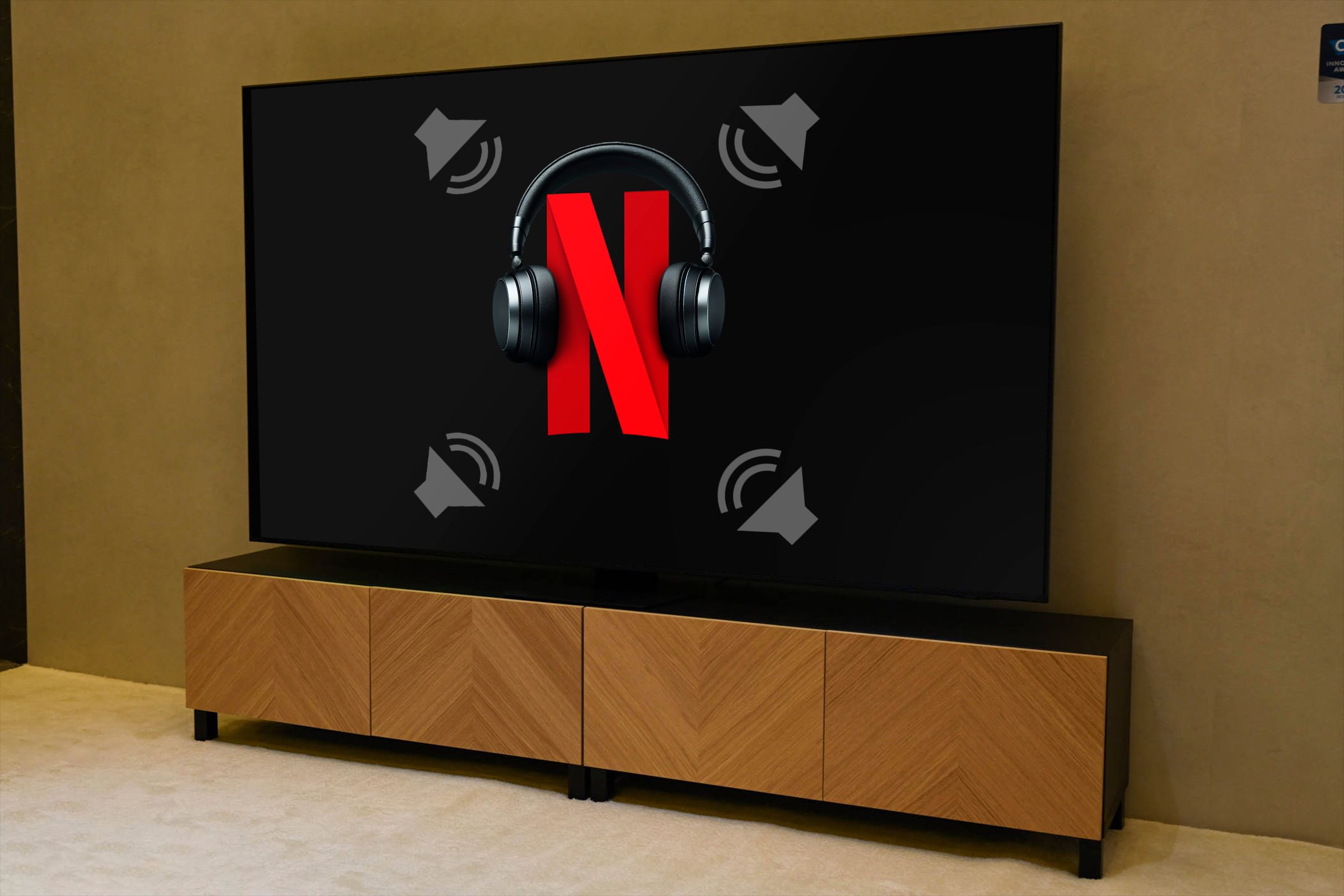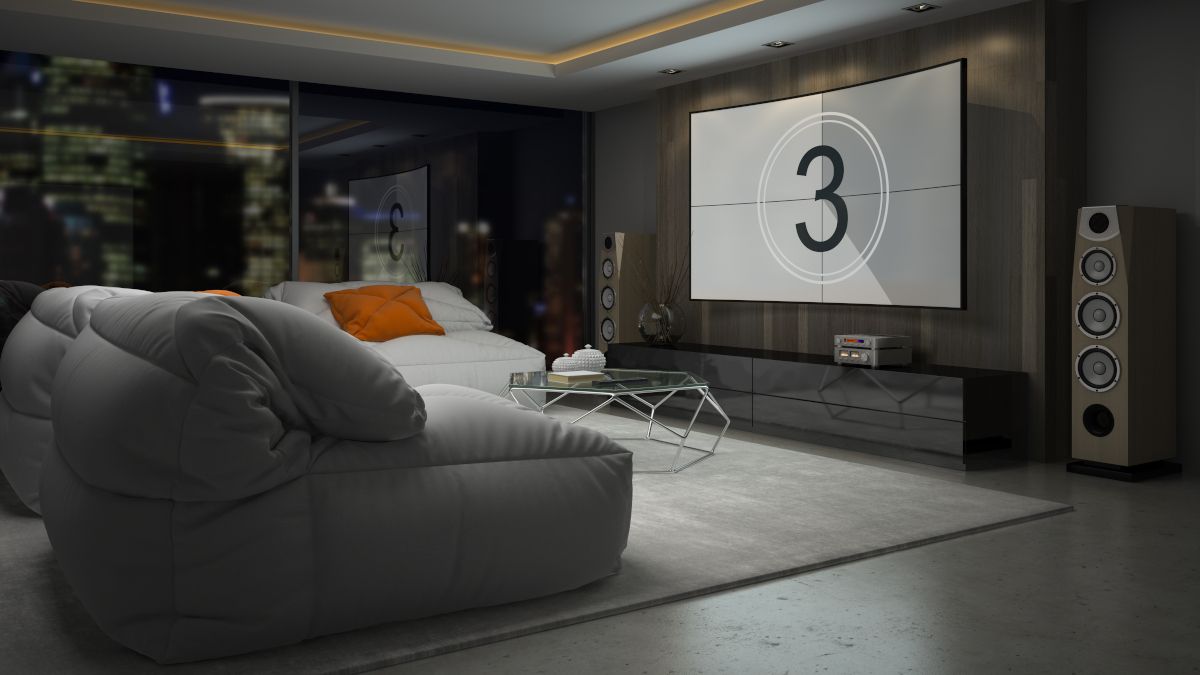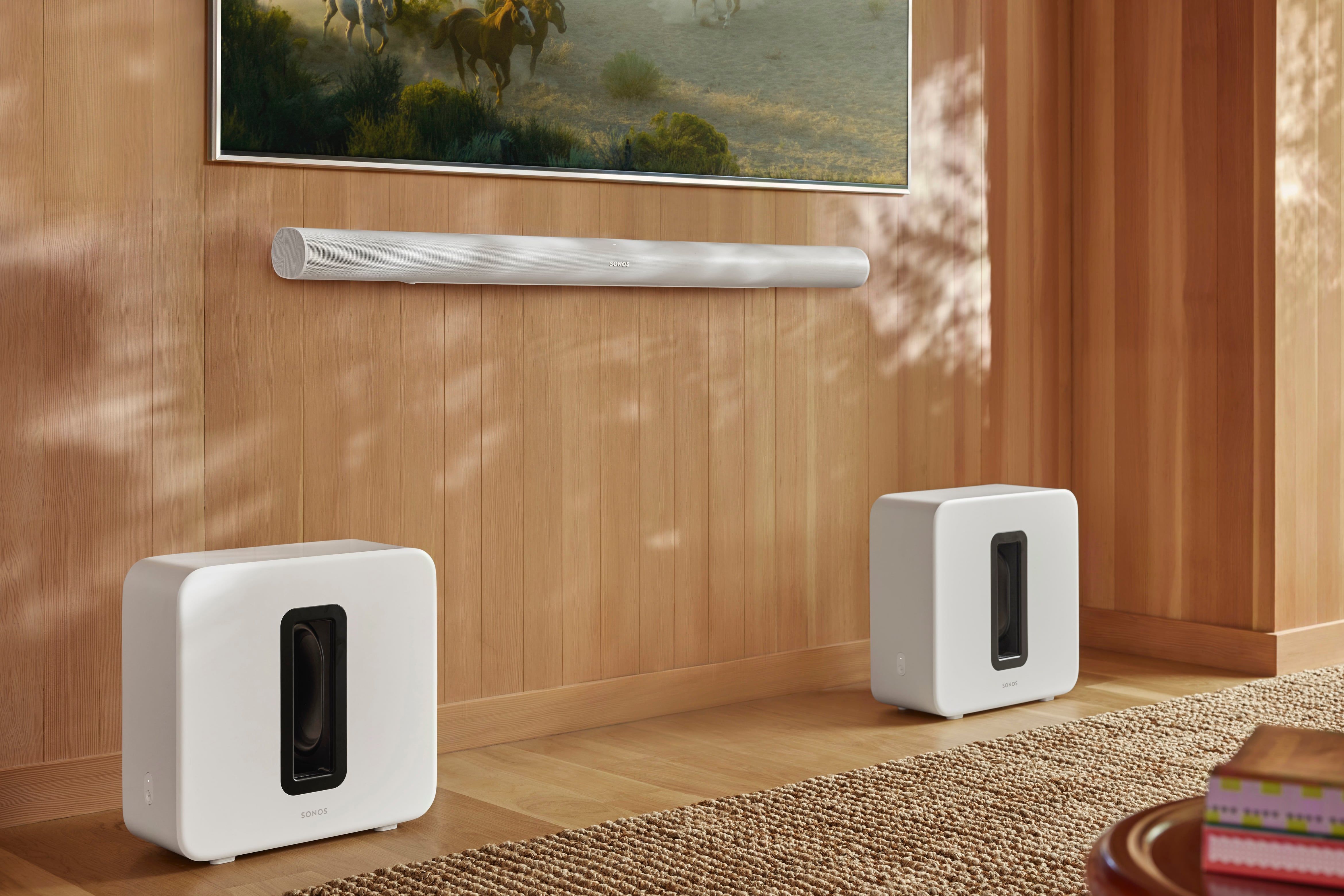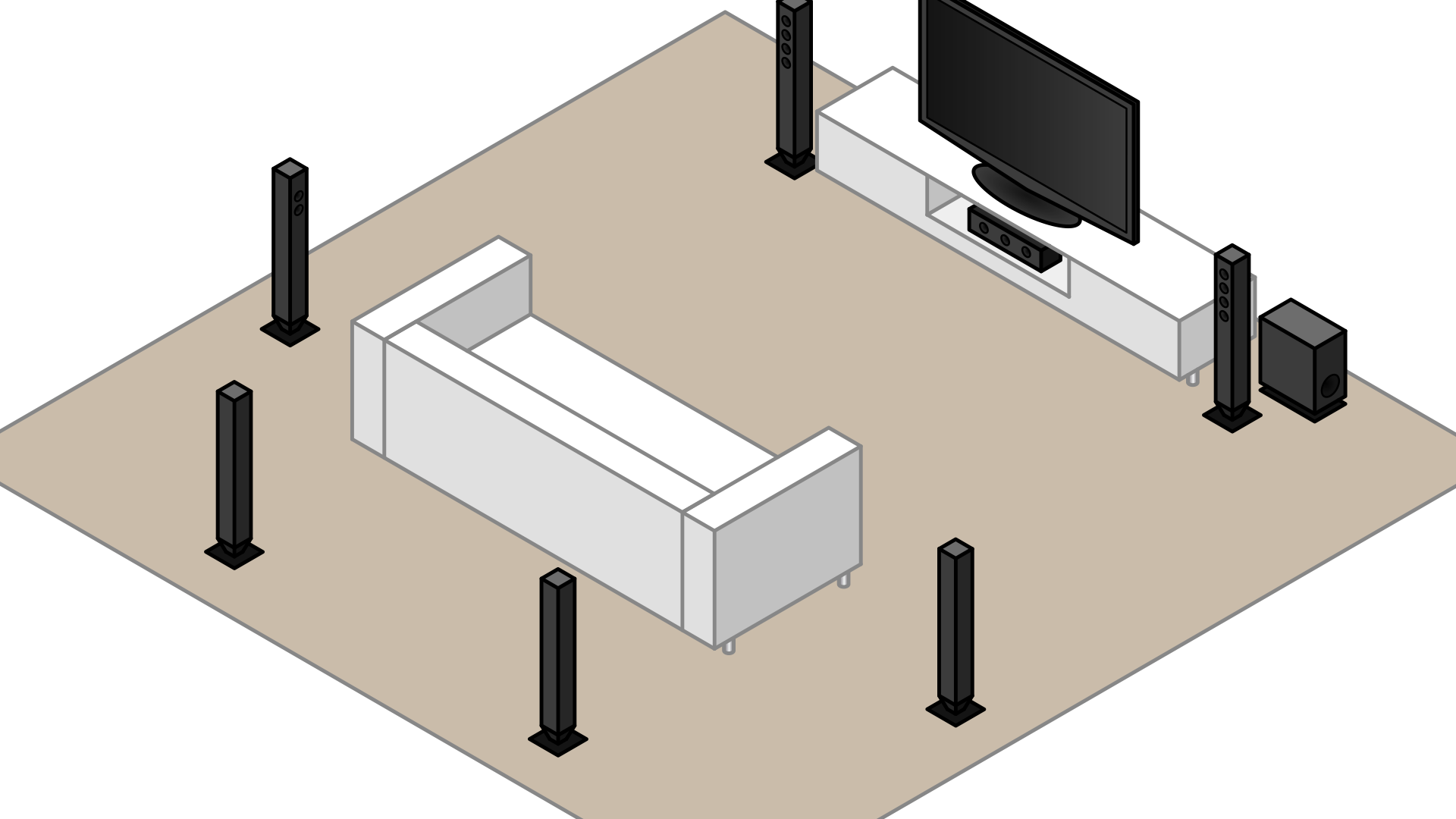Key Takeaways
- The main difference between 5.1 and 5.2 setups is the extra subwoofer.
- Adding a second subwoofer improves bass distribution throughout the room for a more balanced sound.
- Consider room size, cost, and setup complexity before opting for a 5.2 system over a 5.1 in certain scenarios.
If you’re looking to upgrade your home theater setup, you’ve likely encountered the terms 5.1 and 5.2 (or 7.1 and 7.2) being tossed around. So, what’s the difference between these two systems, and more importantly, does it actually matter?
What’s the Difference Between 5.1 and 5.2?
The primary difference between a 5.1 and 5.2 home theater setup is that the 5.2 has an extra subwoofer. In surround sound setups, the first number indicates the number of regular full-range speakers, and the second indicates the number of subwoofers.
A 5.1 setup consists of five speakers and one subwoofer, while a 5.2 system includes the same five speakers but adds a second subwoofer. If you see three numbers, e.g., 5.1.2, the third number indicates the number of ceiling (or ceiling-facing) speakers for a more realistic 3D sound. It’s the main selling point of Dolby Atmos.
Note that the purpose of a 5.2 surround sound system isn’t to add directional left and right channels to your bass. Low-frequency waves are quite long (e.g., a 20Hz wave is 60ft/18.3m long) and thus omnidirectional, so in a properly set-up system, you can’t discern which side of the room the bass is coming from.
With the definitions out of the way, let’s talk about the practical differences between the 5.1 and 5.2 systems. The subwoofer‘s role is to reproduce low frequencies (bass), so by adding an extra subwoofer, you get a fuller, more well-rounded bass sound. It doesn’t necessarily get louder and bassier, though it can if you turn the bass up on the receiver or subwoofer’s dedicated volume/gain knob.
The primary goal of a dual-subwoofer setup is to improve the sound quality of the bass by providing a more even and balanced frequency response throughout the room. The benefits are most noticeable in large rooms with multiple seating areas.
With one subwoofer, the bass doesn’t always distribute evenly in some rooms and scenarios, resulting in overly loud bass in some parts of the room and dead zones in others. Imagine a large nightclub dance floor with seating around the perimeter. If the club owner was stingy and only bought a single subwoofer, the bass might get overwhelmingly loud in the center of the dance floor but practically nonexistent along the walls. The solution is to add an extra subwoofer.
It’s also worth noting that the effectiveness of dual subwoofers depends on where you put them. Generally speaking, subwoofers are best placed in corners, ideally on opposite sides of the room. This way, the subs can do a better job of “exciting” (activating) all room modes, allowing the bass to fill the whole room. The end result is a punchy, tight, and defined bass as opposed to an obnoxious, boomy thump associated with poor bass distribution.
Considerations Before Getting a 5.2 Surround Sound System
While a two-subwoofer system sounds better in almost all rooms and scenarios, unlocking its full potential requires extensive manual setup. First, you have to make sure that you’re getting the right hardware. 5.2 home theater setups are significantly rarer than 5.1, 7.1, and even 7.2, so you’ll likely have to create your own combination of receiver, speakers, and two identical subwoofers.
A dedicated 5.2-channel receiver, like the Sony STRDH590, is the ideal solution, and it’s what you should get if you’re starting from scratch. If you already have a 5.1 receiver and know what you’re doing, you can use a simple Y-splitter cable instead. If you opt for a Y-splitter, be careful not to overload the subwoofers or your amplifier since you’re effectively connecting the subwoofers in parallel and halving their impedance.
Once you have all the hardware, you’ll need to spend significant time finding the perfect location for your specific room. Then, you have to calibrate them to ensure that both subs blend seamlessly with the rest of the setup.
When Is 5.1 Enough?
There’s a good reason why 5.2 isn’t as popular as 5.1 or 7.1 systems. While the idea of adding a second subwoofer to your existing system can seem appealing, it’s not always as straightforward as it sounds. Plus, for smaller rooms, a second subwoofer might not offer a good return on the investment. The benefits aren’t super noticeable if everyone is seated in the same spot and your current subwoofer adequately covers the area.
Those with smaller rooms are generally better off with a 5.1.2 or even 5.1.4 setup, as the overhead speakers make for a more immersive experience than an extra subwoofer. However, if you have a large room and are planning a 7.1 system, the cost of an extra subwoofer is much easier to justify, as the sound benefits will be far more noticeable.








